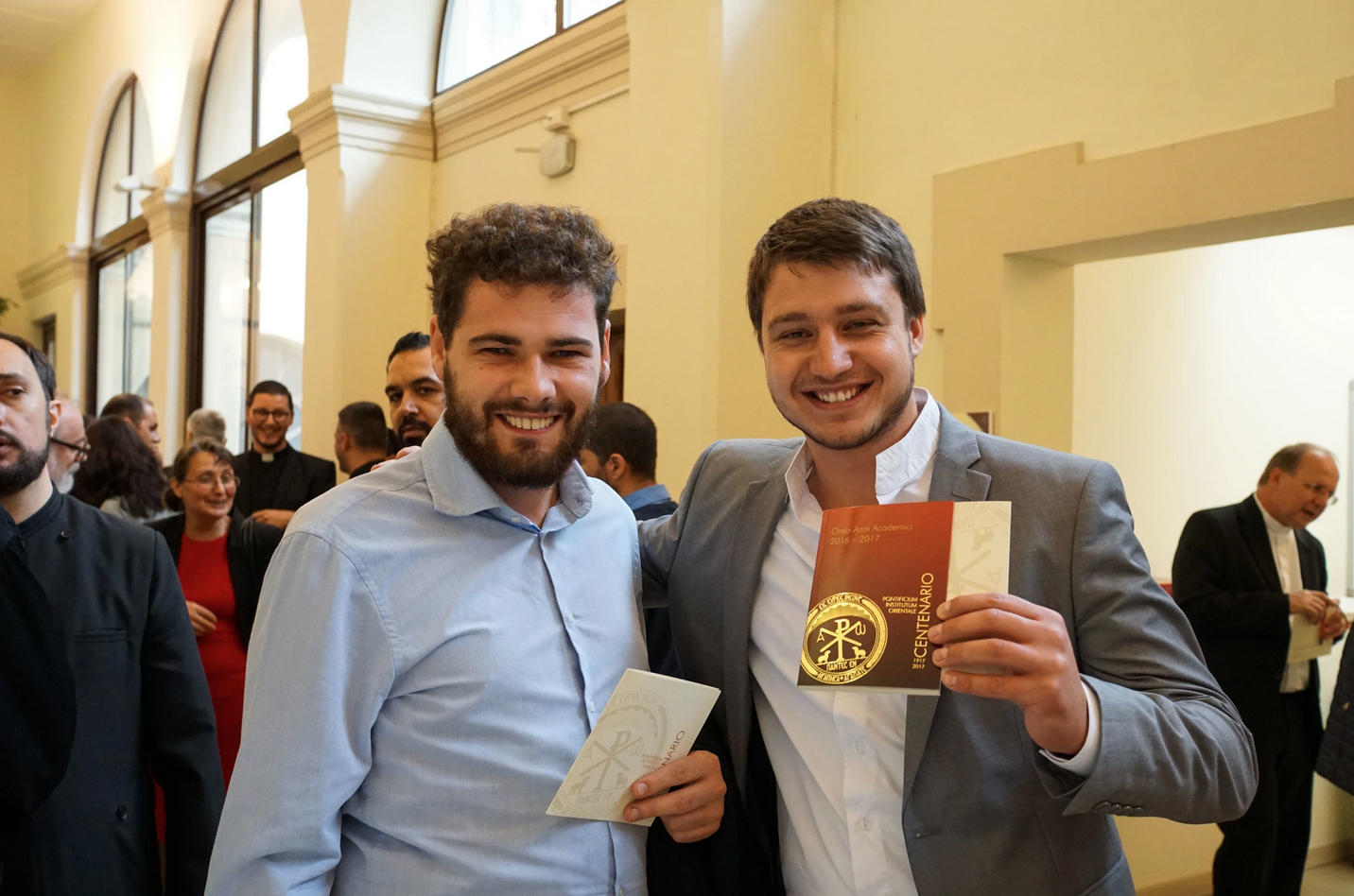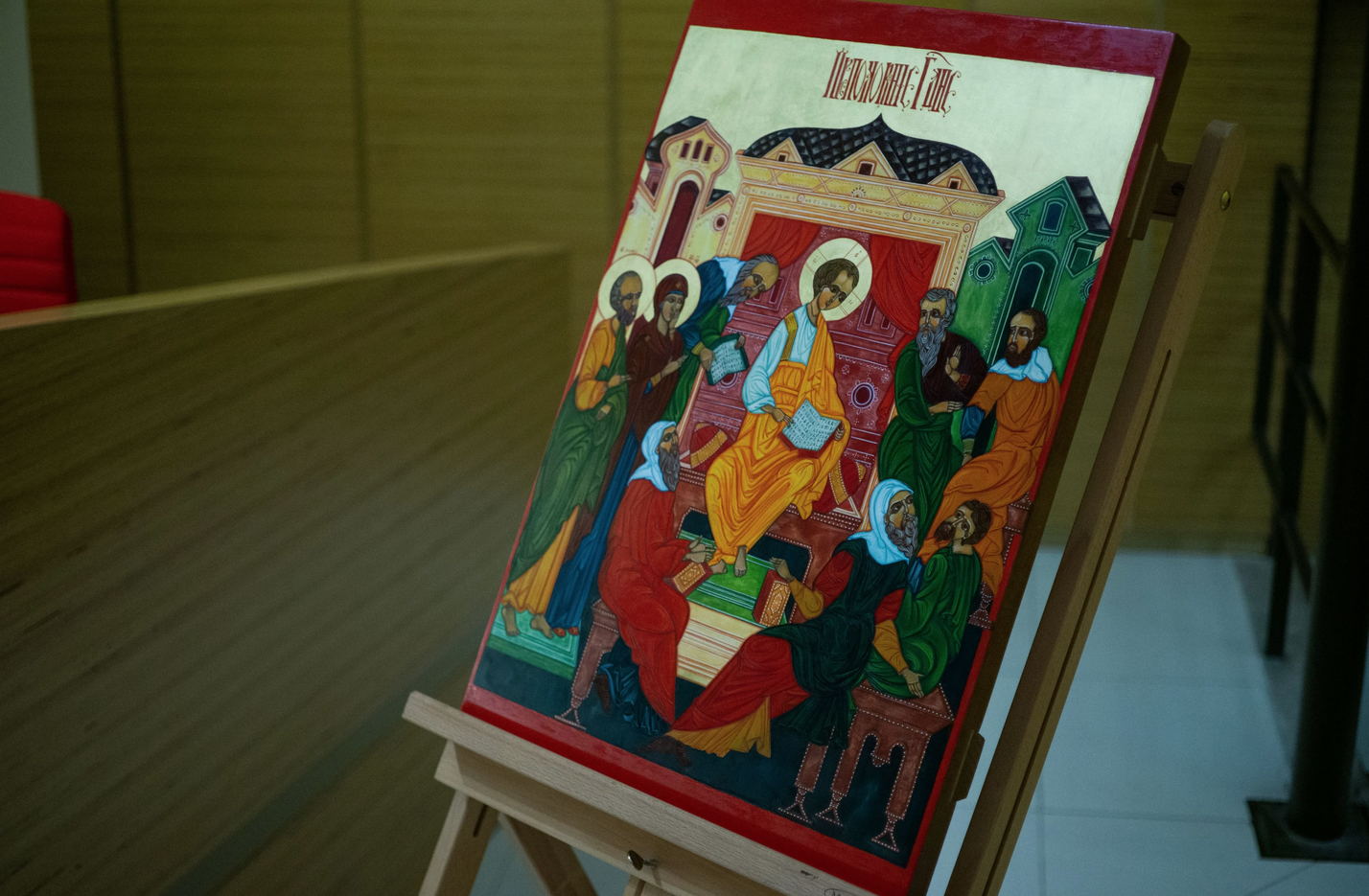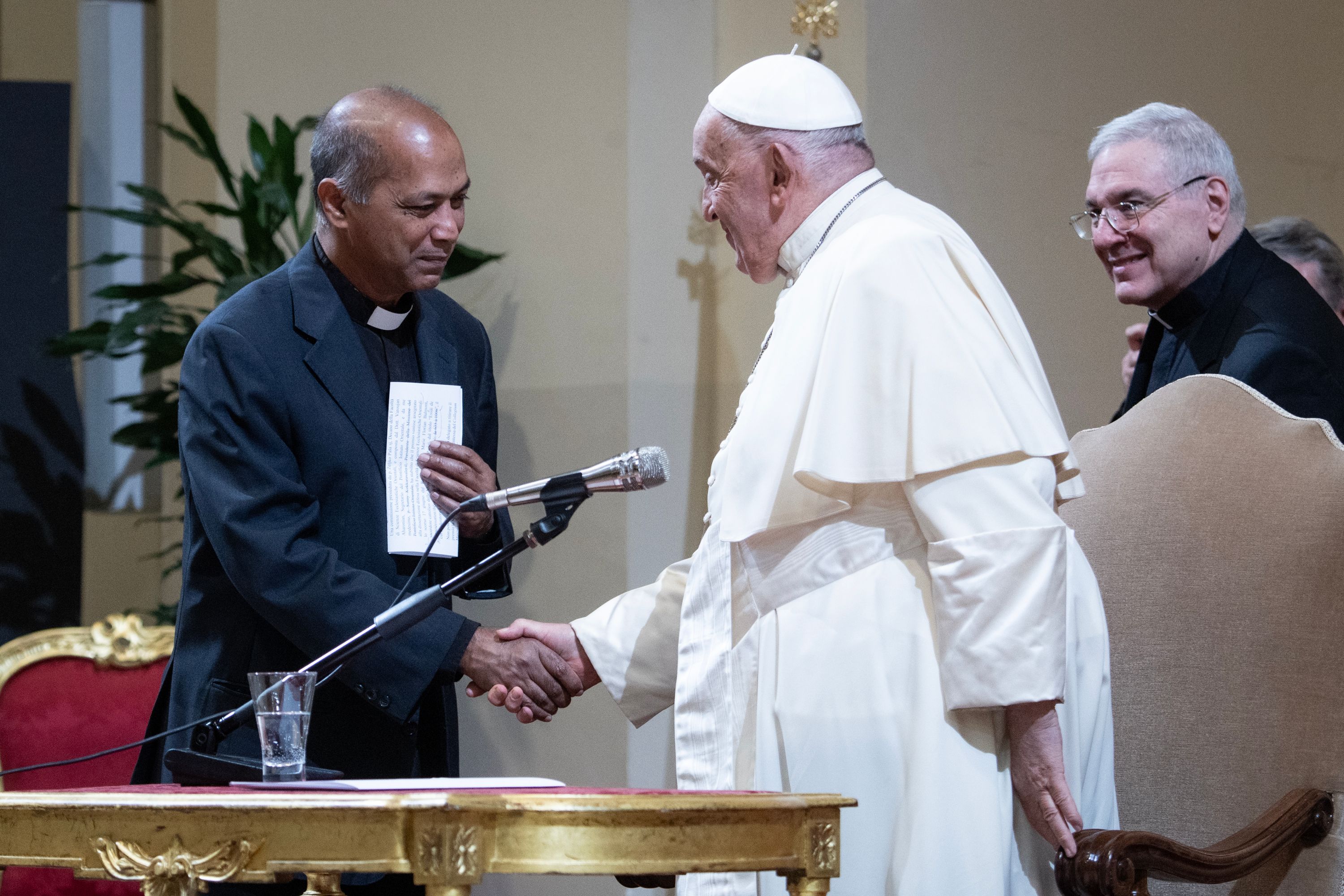- Home
- La Gregoriana
- 64 - Peace be with you all
- Rediscovering of our common heritage thanks to Eastern Christianity
Share:

Research and study of sources on Eastern Christianity
is fundamental to understand that the substantial common heritage
we share with our Orthodox brethren far outweighs that which divides us.
Promoting mutual understanding is a mutual enrichment.
We learn from one another, and this also applies
to what we can give or receive from the Latin Church.
“The integration of the Institutes has led the Pontifical Oriental Institute to recognize that there is more than just the Oriental Churches, just as the Collegium Maximum and the Pontifical Biblical Institute recognized that there is more than just the Latin Church. Recognizing the existence and rights of the other, as well as one’s own obligations, forms part of the life of the new configuration of the Gregoriana”, said Fr. Sunny Thomas Kokkaravalayil, a Jesuit priest native of Kerala, India, President of the Oriental Institute. Fr. Kokkaravalayil is also a former student of the Oriental Institute, having obtained a Licentiate and Doctorate in Canon Law, a subject he has taught there since 2005, eventually becoming Pro-Rector of the same Faculty.
In addition to the Faculty of Eastern Canon Law, established by Pope Paul VI in 1971, the Oriental Institute comprises the Faculty of Eastern Christian Studies, established in 1917, subdivided into three sections: theological-patristic, liturgical, and historical, as well as various departments or subsections (Spirituality, Languages, Music, among others). It has approximately 250 enrolled students, mostly from Eastern Europe, India and the Middle East, including Egypt, Ethiopia and Eritrea. “There are also students from the United States and from Europe - and not just Eastern Europe, such as Ukraine, Russia, Rome, Hungary, etc. -. In fact, the Oriental Churches are also present in Italy, Spain, France and Germany," adds Father Kokkaravalayil. “Most of the students are Eastern Catholics and Orthodox Christians, with some members of the Latin Church who wish to pursue these studies.”
What is the specificity of the academic offering of the Oriental Institute?
“The vocation of the Oriental Institute is to be a higher institute dedicated to the scholarly study and research of Eastern Christianity. This implies, first of all, the study and publication of the sources common to the Eastern Catholic and Orthodox Church. [see page 53 of this journal]. It is important to recognize the substantial common heritage we share with our Orthodox brethren: it far outweighs that which divides us. Becoming increasingly aware of this, and thereby drawing closer to one another, is a service to the universal Church of God, which includes the Latin Church. In the past, many of our professors made significant contributions to the Second Vatican Council, especially to the decrees Orientalium Ecclesiarum on the Catholic Churches of the Eastern Rite and Unitatis redintegratio, which calls for Christian unity. To this day, about 20 per cent of our students are members of the Orthodox Churches, and there are also some Protestants. We cooperate closely with all the Orthodox Churches and enjoy a special co-operation with the Greek Church and with Greece.”

Eastern Christianity represents a great variety in the Church. How is this reflected in your academic programme?
“In many cases the courses are expressed in their plural form. Not ‘liturgy’ but ‘liturgies’, not ‘history’ but ‘histories’, because there are many different Eastern Churches, and this is also reflected in Spirituality, Music, Canon Law. Similarly, there are many languages, both ancient and modern: Arabic, Syriac, Coptic, Russian, Armenian, Ethiopian, Georgian, Paleo-Slavic, Turkish, Canonical Latin, Sogdian... The Modern Greek course, which is also open to external students, is funded by the Greek Orthodox Church. Romania, through its Ambassador to the Holy See, finances the Romanian language course. We offer about fifteen courses, including ancient and modern languages. When it comes to Christian Oriental studies, I can safely say that we have the best library in the world. Many people visit us for research purposes.”
How do you respond to the challenges ahead?
“The question that constantly guides us is how we can help the Eastern Churches, and the Church as a whole, to carry out their mission. The answer is certainly to be found in the research and publication of our common heritage, as mentioned earlier, in addition to the academic formation of our students. Our pedagogical method is circular: our teaching is the result of our research. It is therefore essential that our professors remain constantly up-to-date. A second important task is the service to the Vatican Curia, where many of our teaching staff are consultants for various dicasteries, and our publications are widely consulted and appreciated.”
What can the Oriental Institute offer and receive from the new configuration of the Gregoriana?
“Fr. Robert Taft, S.J., a renowned expert in Oriental studies and liturgy, would often reflect on what the liturgies of the Oriental Churches could receive, understand or learn from the Latin liturgy. I think this is true in many ways: there is much that the Eastern world can learn from the Latin world. We must be open, we must be aware that there is another Church, other forms, other ways. This also applies to our Institute, because many future leaders of the Eastern Church are trained in our Institute. There is a lot we can learn, both at the academic level and in terms of leadership. At the same time, I hope that this integration will serve to improve the Gregorian University as a whole, making it more efficient and less bureaucratic. While this integration does not affect the autonomy of our faculties in planning events, it has been a most welcome stimulus for us. And for that I am very grateful.”

The Faculty of Theology introduced last year an “Eastern First Cycle” and a Licentiate in Ecumenical Studies, with classes taught by members of your Institute. In what other areas could cooperation be envisaged?
“The Faculty of History and Cultural Heritage of the Church could be another specific area of cooperation with our History Department. Not least because teaching the history of the Latin Church requires an understanding of the origins and existence of the Eastern Churches, which demand a greater insight than that of the Western world. But there are many other areas of cooperation, such as liturgy, spirituality and, of course, ecumenism, the fundamental principle that underpins our existence. Our programs must be the result of a joint effort, no longer carried out in isolation.”
Synodality is today a central theme of reflection in the Catholic Church, a theme so dear to the Eastern Christian world. What is your impression of this particular moment?
The Synod, although it is continuously practiced, especially in the Eastern Churches, is an integral part of the Church’s richness. Without a synod or a similar institution, there is no Eastern Church. Indeed, Pope Francis has clearly stated that the Latin Church too has a lot to learn from the Eastern world. In Eastern Christianity, however, the exercise of synodality is limited to the Synod of Bishops, which meets and adopts its decisions. The understanding of synodality can be enriched by studying the documents issued by the ‘Roman’ Synod and by examining the preparatory stages of the Second Assembly. I believe that promoting mutual understanding and thus mutual enrichment is an integral part of the vocation of the Oriental Institute. We can learn from one another. I firmly believe that our Institute’s role and prospects are no less important than they were in the past.”


